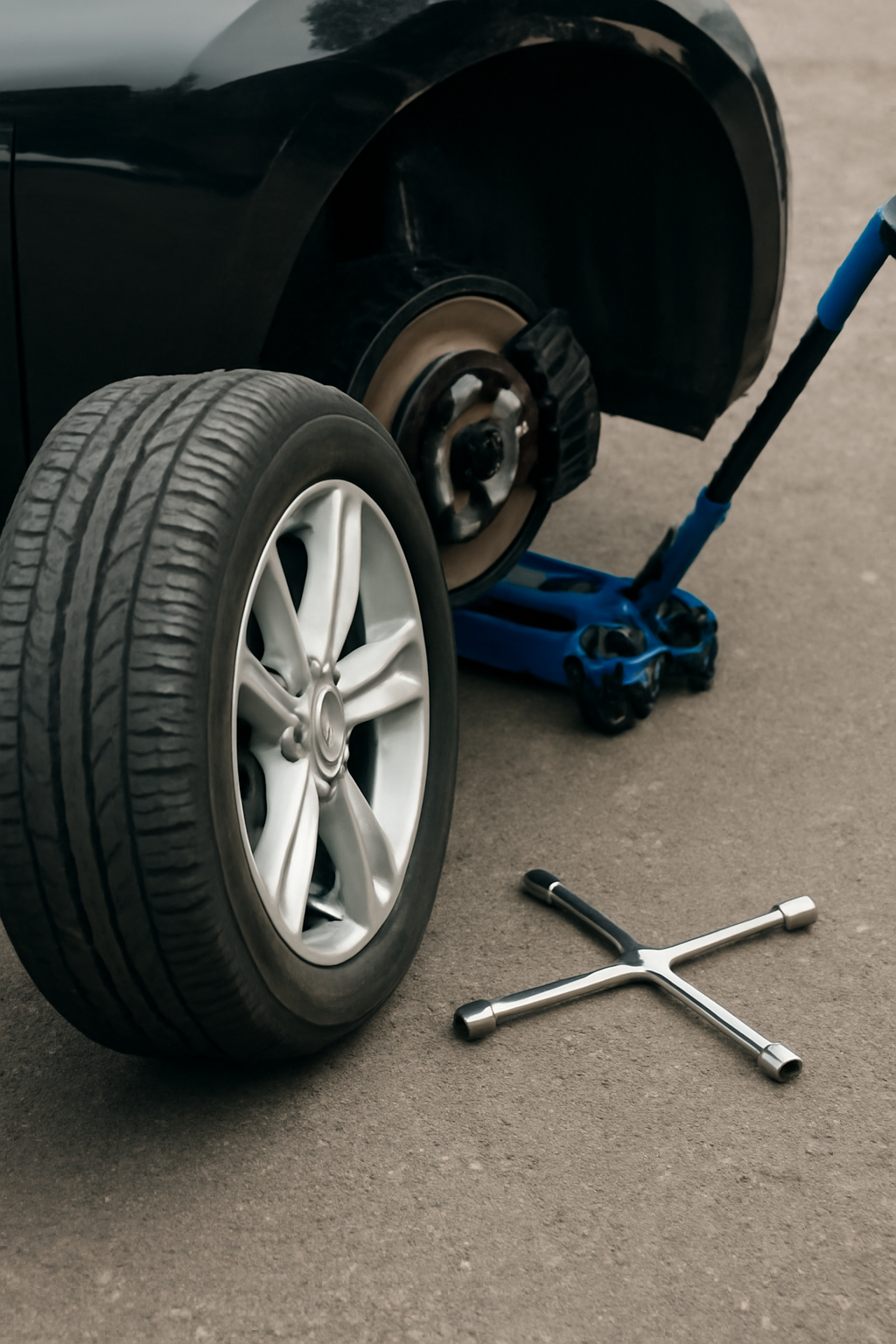A crucial but frequently disregarded part of auto maintenance is routine tire rotation. Many car owners wonder, “How often should you rotate your tires?” By ensuring that your tires wear evenly, tire rotation prolongs the life of your vehicle and improves safety and performance. Poor handling, less traction, and even early tire failure can result from uneven tire wear.
Over time, you can save money by avoiding expensive tire replacements by adhering to a regular rotation schedule.
Let’s examine the significance of tire rotation and the ideal frequency of tire rotations.
Understanding Tire Rotation: What Is It and Why Is It Important?
Tire rotation is a process of shifting your tires from one location to another on your car so that all the tires wear at the same rate. This process makes the tires more evenly distributed, which in turn makes the tires last longer and handle better.
In the long run, uneven wear on your tires will impact your vehicle’s performance, creating poor traction, longer stopping distances, and less responsive steering. Rotating your tires on a regular basis prevents these issues, ultimately improving safety and driving comfort.
Whether you do it yourself or hire someone to do it, tire rotation is a simple but vital aspect of the maintenance of your car.
How Often Should You Rotate Your Tires? Key Guidelines and Expert Recommendations
The general rule of thumb for most vehicles is to replace your tires at 6,000 to 8,000 miles. But this can be modified depending on a number of different factors, including the type of conditions you’re driving in and the type of tires that are on your vehicle. Some manufacturers will suggest rotating your tires more often if you drive in harsh environments, like on unpaved roads or during severe weather.
Also, if your vehicle has specific tire wear patterns, regular tire rotation can help in even wear maintenance. Always consult your car’s owner’s manual or a professional mechanic to determine the ideal schedule for your vehicle.
4. Factors That Affect Tire Rotation Intervals
There are several reasons that can impact how often you will have to rotate your tires. Perhaps the most significant one is driving style—incessant hard braking, high-speed cornering, or hard acceleration can cause a pattern of uneven tire wear. The type of vehicle you drive also comes into play; e.g., front- or rear-wheel drive vehicles will wear tires differently and will require tires rotated more frequently. Tire type must also be taken into account, off-road or high-performance tires possibly requiring more care than regular tires.
Finally, your local climate and road conditions, such as harsh winters or rough, unpaved roads, will influence tire wear and rotation requirement.
Front-Wheel vs. Rear-Wheel vs. All-Wheel Drive: Tire Rotation Requirements per Vehicle Type
Your car’s drivetrain will affect how tire rotation needs to be managed. For front-wheel drive vehicles, the front tires will experience the majority of the engine’s weight, resulting in faster wear. Tire rotation would need to be performed on a regular basis to avoid uneven tread on the tires. For rear-wheel drive vehicles, the rear tires experience more stress, especially during aggressive acceleration, and tire rotation is necessary for wear to be even.
For all-wheel drive vehicles, all four tires engage simultaneously, making it important to rotate all tires to prevent uneven tread. Understanding your vehicle’s drivetrain and its specific needs will help you determine the best tire rotation schedule.
| Vehicle Type | Tire Wear Characteristics | Recommended Tire Rotation Frequency | Key Considerations |
|---|---|---|---|
| Front-Wheel Drive | Front tires wear faster due to engine weight distribution | Every 6,000 to 8,000 miles | Rotate tires regularly to maintain even tread and handling |
6 Signs That Your Tires Need Rotating Earlier Than Expected
Even if you’re on a standard tire rotation schedule, there are indicator signs that your tires need to be attended to before your next routine rotation. Uneven tread wear is one of the most glaring indications that your tires need rotation sooner than expected. If you notice one side of your tire worn out in relation to the other, or if you are experiencing a bumpy, rugged ride, it is an indication that your tires no longer wear evenly.
Additionally, if you observe that the steering wheel is vibrating or your vehicle pulling in one direction, an early tire rotation to balance it may be necessary.
The Advantages of Routine Tire Rotation
Tire rotation is not just about getting your tires to last longer, although that is a significant benefit. Regular rotation makes the vehicle safer by allowing all the tires to have even traction, which reduces the risk of skidding or hydroplaning. It also makes the vehicle more fuel-efficient since evenly worn tires have less rolling resistance, which means better gas mileage. It helps to keep the alignment and suspension in proper alignment as well, which results in a smoother ride.
By avoiding premature tire replacement and wear on other parts of your car, regular tire rotation can help you save money over time.
8. Rotating Your Tires: Do It Yourself Step-by-Step or Let a Professional?
Rotating your tires involves more than simply swapping them around—it’s a precise process that requires the right tools and knowledge. To rotate your tires yourself, you’ll need a jack, a lug wrench, and a jack stand. To begin, loosen the lug nuts on each tire, use the jack to raise the car, and then place it firmly on the jack stands. Then rotate the tires according to the specific pattern recommended for your vehicle.
If you don’t feel sure about doing it or lack the appropriate equipment, it’s preferable to seek the advice of a professional. A certified mechanic will rotate the tires quickly and correctly.
Common Tire Rotation Myths Debunked
There are a number of tire rotation myths that can cause misunderstandings and possibly expensive errors. One common myth is that rotating tires is only necessary for high-mileage vehicles. In reality, even new cars benefit from regular rotations to maintain tire performance and safety.
Another misconception is that all tires wear at the same rate, which is not true—certain types of driving can cause specific tires to wear more quickly. Some people also believe they can rotate tires in any order, but the correct rotation pattern depends on your vehicle’s drivetrain and tire configuration. You can effectively maintain your tires by knowing the truth behind these myths.
Conclusion
Rotating tires on a regular basis is an easy yet very efficient maintenance procedure that is essential to the overall performance of your car for safety, and longevity. By following the recommended tire rotation schedule and paying attention to signs of uneven wear, you’ll help your tires last longer, improve fuel efficiency, and ensure a smoother ride.
Whether you do it yourself or take your car to a mechanic, keeping up with tire rotation is a small investment that yields big returns in terms of vehicle care and peace of mind. Keep your tires rotating, and your vehicle will thank you with safer, more reliable performance.

Bruce William is a professional content writer and vehicle engineer with extensive car maintenance and repair knowledge. His expertise spans all vehicle parts, offering practical solutions for various automotive issues. Bruce provides valuable insights through his website articles to help readers maintain their cars for optimal performance and longevity.

